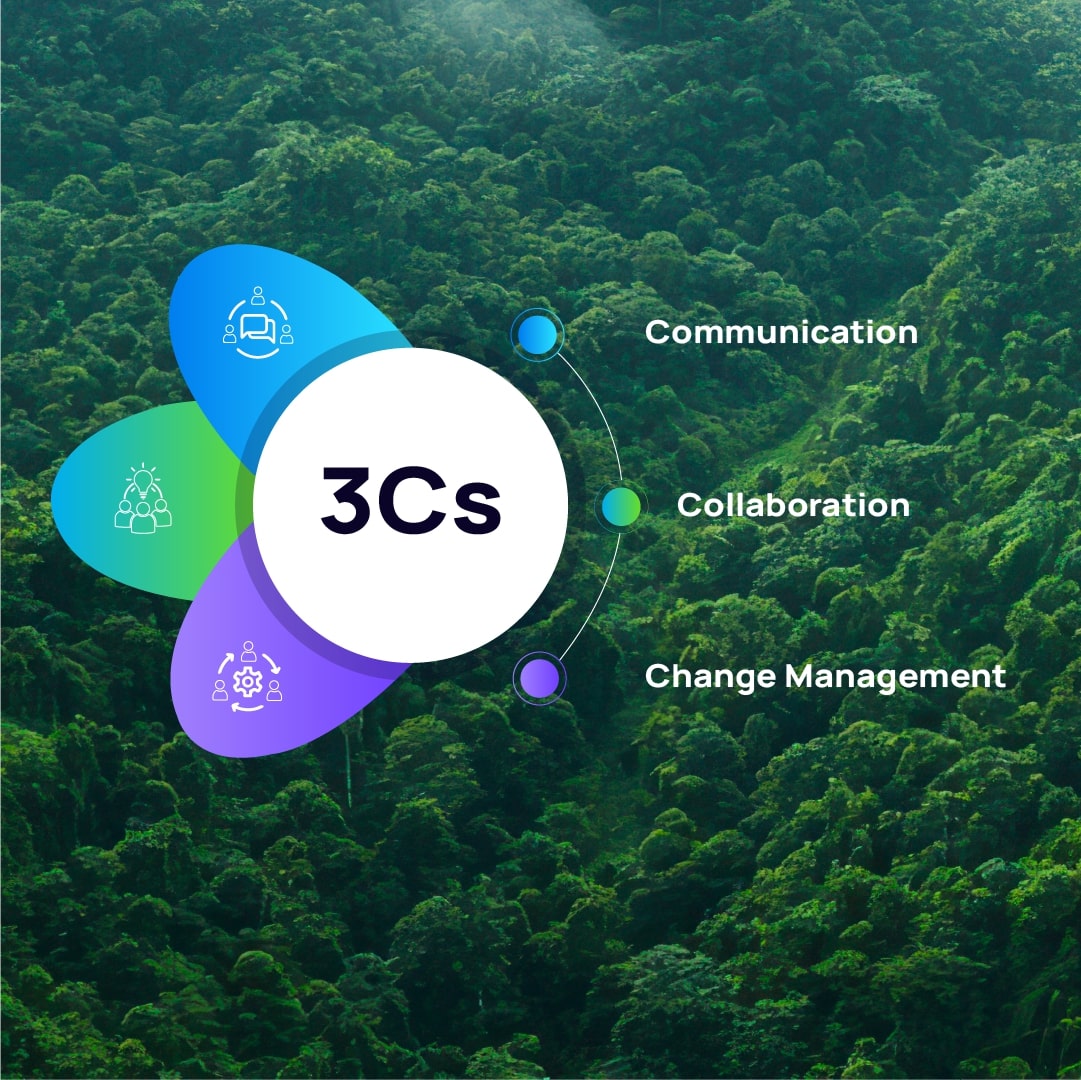
The Role of Communication, Collaboration, and Change Management in ESG and Sustainability Initiatives
Embarking on a wholesome sustainability strategy and implementing Environmental, Social, and Governance (ESG) initiatives in organizations requires multiple stakeholder involvements and demands a holistic approach. An honest communication, well-oiled collaboration, and robust change management (3Cs) are critical to successfully embedding these initiatives into the core operations and culture of a company.
Here’s why these elements are essential and how companies across the globe have leveraged unique and creative methods to achieve success.
Communication
There’s no substitute for communication in any large strategic initiative, which also applies to sustainability strategy. A flexible, free-flowing, and effective communication ensures that all stakeholders, including employees, customers, investors, and the community, understand the company's sustainability goals, the steps being taken to achieve them, and the progress made. Clear and consistent communication helps in aligning everyone’s efforts towards common goals.Unilever Sustainable Living Plan is communicated through comprehensive annual reports, engaging infographics, and interactive online platforms. The company also uses internal communication tools like newsletters and town hall meetings to keep employees informed and motivated about sustainability goals.
Ørsted, a Danish renewable energy company, uses VR to give stakeholders virtual tours of their offshore wind farms. This immersive experience https://youtu.be/5boBr3T5cTs helps communicate the impact and scale of their projects more effectively than traditional methods.
Schneider Electric uses gamification to engage employees in sustainability initiatives. Their “Go Green in the City” competition encourages students and employees to develop innovative energy management ideas, using game-like elements to make the process engaging and educational.
Collaboration
Collaboration fosters the sharing of ideas, resources, and best practices, enabling organizations to tackle sustainability challenges more effectively. It involves working with internal teams, other companies, non-profits, governments, and even competitors to drive systemic change. Coca-Cola collaborates with various partners to address water scarcity through its “Replenish Africa Initiative” (RAIN) Replenish Africa Initiative (coca-colacompany.com). This collaboration includes governments, NGOs, and local communities to improve access to safe water and sanitation, demonstrating a multi-stakeholder approach to sustainability.
Through the “AI for Earth” program , Microsoft collaborates with researchers, non-profits, and conservation organizations to apply AI technologies to solve environmental challenges AI for Earth: Helping save the planet with data science - Microsoft Stories Asia. This collaboration leverages Microsoft’s technological expertise and the on-ground knowledge of its partners to drive impactful sustainability initiatives.
Lush Cosmetics uses social media platforms and collaborates with influencers to spread awareness about their sustainability efforts, such as zero-waste packaging and ethical sourcing. This approach helps reach a broader audience and drives engagement through relatable voices.
IBM uses its internal collaboration platform, “ThinkPlace,” to crowdsource ideas from employees for sustainability initiatives. This platform allows employees from different regions and departments to collaborate on projects, share insights, and co-create solutions.
Change Management
Change management is crucial in ensuring that sustainability initiatives are successfully adopted and integrated into the organizational culture. It involves preparing, supporting, and helping individuals, teams, and the organization as a whole to make the necessary shifts toward sustainability. Danone’s “One Planet. One Health” initiative ONE PLANET. ONE HEALTH (danone.com) required a significant cultural shift. The company implemented change management practices by engaging employees through workshops, training sessions, and leadership programs focused on sustainability. They also used digital platforms to track progress and provide feedback.
Walmart’s sustainability goals, such as Project Gigaton Project Gigaton (walmartsustainabilityhub.com), aimed at reducing emissions by one billion metric tons, involve comprehensive change management strategies. This includes training suppliers, creating incentives for sustainable practices, and using data analytics to monitor progress and make informed decisions.
The “Sustainable Dance Floor” by Energy Floors uses kinetic energy generated by dancers to power the floor’s lighting. This creative approach not only raises awareness about renewable energy but also engages people in a fun and interactive way.
Communication, collaboration, and change management are critical pillars for the successful implementation of ESG and sustainability initiatives in organizations. Companies that effectively leverage these elements can better align their stakeholders, foster innovation, and drive meaningful progress toward sustainability goals.